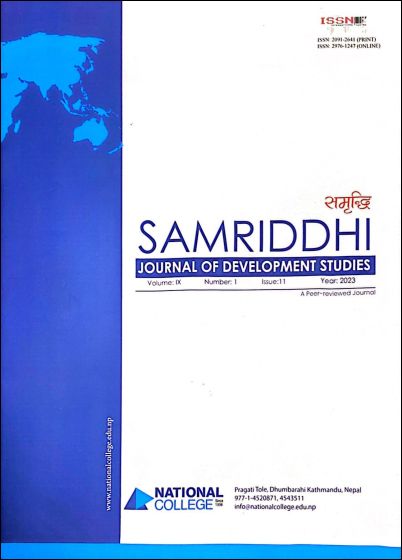Social and Economic Impact of Rural Out Migration on Agriculture of Roshi Rural Municipality of Kavrepalanchok
DOI:
https://doi.org/10.3126/sjds.v9i1.71624Keywords:
rural outmigration, social and economic impact, coping mechanism, agricultureAbstract
Rural out-migration is a major challenge being faced in Nepal, particularly in the agricultural sector. This study investigated the social and economic impacts of rural out-migration on agriculture in Roshi Rural Municipality (RM), a rural region in the Kavrepalanchok district. The study used a snowball sampling method to collect both qualitative and quantitative data from 60 households, 30 of which had no migration within the past year and 30 of which had at least one migrant. The results showed that households with no migration had higher agricultural income than households with migration. However, there was no significant difference in agricultural expenditure between the two groups. The study also found that rural out-migration had a number of social and environmental impacts. These included increased labour shortages, rising wages, increased empowerment of Tamang households, increased burden of agricultural responsibilities on left-behind family members, increased fallow land, and increased monkey attacks. To cope with these impacts, farmers have started to introduce mechanization, use herbicides, and consider cash crop farming. The findings of this study demonstrate the push factors that are causing rural out-migration in Roshi RM. The study also provides insights for policymakers, future researchers, and development practitioners.




